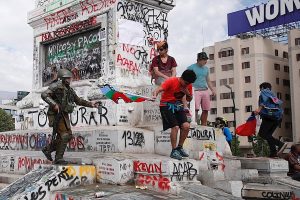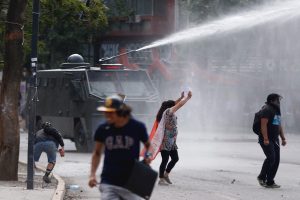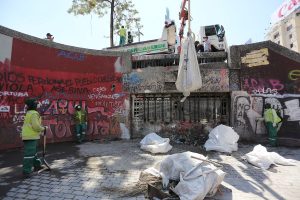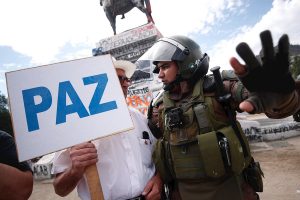By Alberto Peña

Santiago, Nov 5 (efe-epa).- For the past 19 days, Chile has been in the throes of an ongoing earthquake against social inequality that has shaken all the social, political and economic classes and which has Santiago’s Plaza Italia, a symbolic site in the country’s history of social struggle, as its Ground Zero.
Under the gaze of the statue of Gen. Manuel Baquedano, the military victor of the 1879-1884 War of the Pacific in which Chile faced off against Peru and Bolivia, Chileans have gathered for years to protest on assorted issues on the plaza bearing his name, but colloquially known as Plaza Italia.

For more than two weeks, tens of thousands of fed-up people have gathered day after day to call for structural reforms to alleviate the social inequality, reform the rickety pension system, reduce the cost of healthcare, electricity, education, public transportation and consumer goods.
The protests start each day with the best intentions in a peaceful atmosphere but often devolve into violent confrontations between a small portion of the demonstrators and the Carabineros, Chile’s militarized police.

Stones and Molotov cocktails are hurled from one side of the barricades toward the security forces and tear gas and rubber bullets are fired back.
Most of the peacefully protesting demonstrators have not been involved in the violence that first broke out on Oct. 18 over the government’s hike in local metro fares, the straw that broke the camel’s back with many Santiago residents, and ever since then they have been taking to the streets to express their outrage.
The walls of the buildings surrounding the plaza are covered with graffiti, the metro station entrances have been burned repeatedly and every day dawns with them blocked by barricades and with hundreds of flagstones torn up by the rioters littering the area.

Barely any of the local businesses remain open. Most of the ones that have not been looted, burned or otherwise destroyed are closed and shuttered, protected from the angry crowds by iron bars and tightly nailed-on plywood sheets.
Seventy-three-year-old Faustino Fernandez, the Spanish owner of the Prosit restaurant, told EFE that he feels “anxiety, pain and sorrow” over what Chile is suffering through.
“They looted and burned my restaurant. It makes me feel sick. I understand what the people are asking for – dignity, respect, for social classes to be more equal, for there not to be people who are so rich or so poor, for things to be shared – but what I can’t understand is the road we’re on. We’re heading toward the complete destruction of a country that it cost us so much to recover” after the end of the Augusto Pinochet dictatorship in 1990, he said.

Fernandez, who has lived in Chile for 32 years, each day comes to his restaurant fearing what he might find after the riots of the previous night.
After the eruption of the protests on the Plaza Italia, the phenomenon spread within just a few hours on oct. 18 to the capital’s peripheral neighborhoods, and from there in the coming hours and days they spread virtually nationwide.
The situation got to the point where President Sebastian Piñera decided to declare states of emergency in practically the entire country, sending the military out into the streets to try and ensure public order and imposing nighttime curfews in an attempt to quell further demonstrations.
